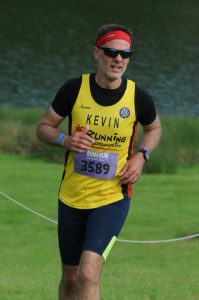 Efforts session week commencing 1st March –
Efforts session week commencing 1st March –
This session was born during the first lockdown last year and made it’s second appearance during the November lockdown so it seems fitting that we repeat the session again now…
The Benefits:
As runners we have three energy systems (Aerobic, Lactate and Alactate also know as Creotine Phosphate CP) we can recruit at different stages during a run/race. By training at different intensities and effort levels utilising all three of these energy systems we can achieve a balanced improvement in our fitness.
This session is designed to train both your Aerobic and Lactate energy systems in a way that will increase your Aerobic capacity and develop your body’s ability to deal with Lactic Acid.
The Aerobic Energy System:
As endurance runners we primarily rely on our Aerobic Capacity to keep us going throughout or run. Put simply the better our Aerobic Capacity is the more efficiently we can deliver oxygen to our muscles. As the Aerobic System relies solely on Oxygen our Aerobic Energy supply is theoretically never ending.
Our Aerobic energy system responds best to longer, lower intensity efforts punctuated by shorter recovery periods. With this in mind during your efforts you should aim to run at around 60-70% effort. You can measure this either by heartrate (if you regularly use a HRM), relative perceived effort (RPE) or use the ‘Talk Test’. If you can say a full sentence with ease you’re not working hard enough, if you can only speak 3/4 words without gasping for breath you’re working too hard. Pace wise this will probably represent something similar to your 10k or tempo pace. Ensure you fully utilise your recovery by backing off to a very easy pace.
The Lactate Energy System:
Although we mainly use our Aerobic Energy there are times we need to work harder during a run/race, this could be a hill, a surge to catch a runner in front or a final push to the finish line. These are the times where we start to recruit our Lactate Energy system. Our lactate Energy System is limited in supply, even elite athletes can only operate in the Lactate Energy System for up to 3 minutes, so we need to use it wisely. As the name suggests the Lactate Energy System produces Lactic Acid within the working muscles, the body breaks this chemical down into two parts using the Lactate as fuel and leaving the Acid in the muscle as a by product.
The crossover point in the body’s ability to deal with the left over acid is known as ‘The Lactate Threshold’. By training effectively in the Lactate Energy System we can train the body to use the lactate on offer for energy and flush the acid more efficiently to prevent the negative effects of burning muscles, heavy legs and cramp.
The Lactate Energy System responds best to shorter harder efforts with longer slower recoveries. Therefore as the efforts in this phase are shorter you should be pushing much harder aiming for around 80-90% effort and entering your Lactate Energy System. Again this can be measured by HR, RPE or ‘The Talk Test’. If you’re using the talk test you should only be able to string 3-5 words together!! The absolute key to making the hard work count is to ensure you use the recovery correctly in order to give your body a chance to find and process the Lactic Acid in your system. I would strongly recommend you walk for half then slow jog the remaining recovery time.
Pre Session:
This should be a hard session so ensure you are well warmed up by completing a walk/jog of around 10mins. during the warm up try to gradually increase your heartrate. Towards the end of the warm up complete 2 or 3 surges where you increase your pace for 20/30 seconds before easing back down for 20/30 seconds (you could easily use lamp posts for this).
The Session:
The session itself is fairly simple and ideally completed on a fairly level route with no noticeable elevation (ie don’t run up Tinglesfield…). For those in Cirencester ‘Town Loops’ or The Waterloo Car Park would be ideal.
Phase 1:
- 2 min efforts
- 1 min recoveries
Phase 2:
- 1 min efforts
- 2 min recoveries
You should aim to complete 5 rounds during each phase with a 2-4 min break between phases.
Post Session:
As you will have been working hard during the second phase you’ll need a good cool down. Following your last effort take a short walk before finishing off with a 10 min jog home. During your cool down aim to gradually reduce the pace, in an ideal world by the time you get home you may even have been walking for a couple of mins. This will ensure that you have flushed all of the left over Acid from your muscles and should help prevent blood from pooling in your lower legs resulting in the heavy feet and legs sensation that regularly follows a hard session.
Once home complete a full set of stretches and treat yourself to something nice to eat as you’ll have earned it…
Hope you enjoy.
Kevin 🙂
